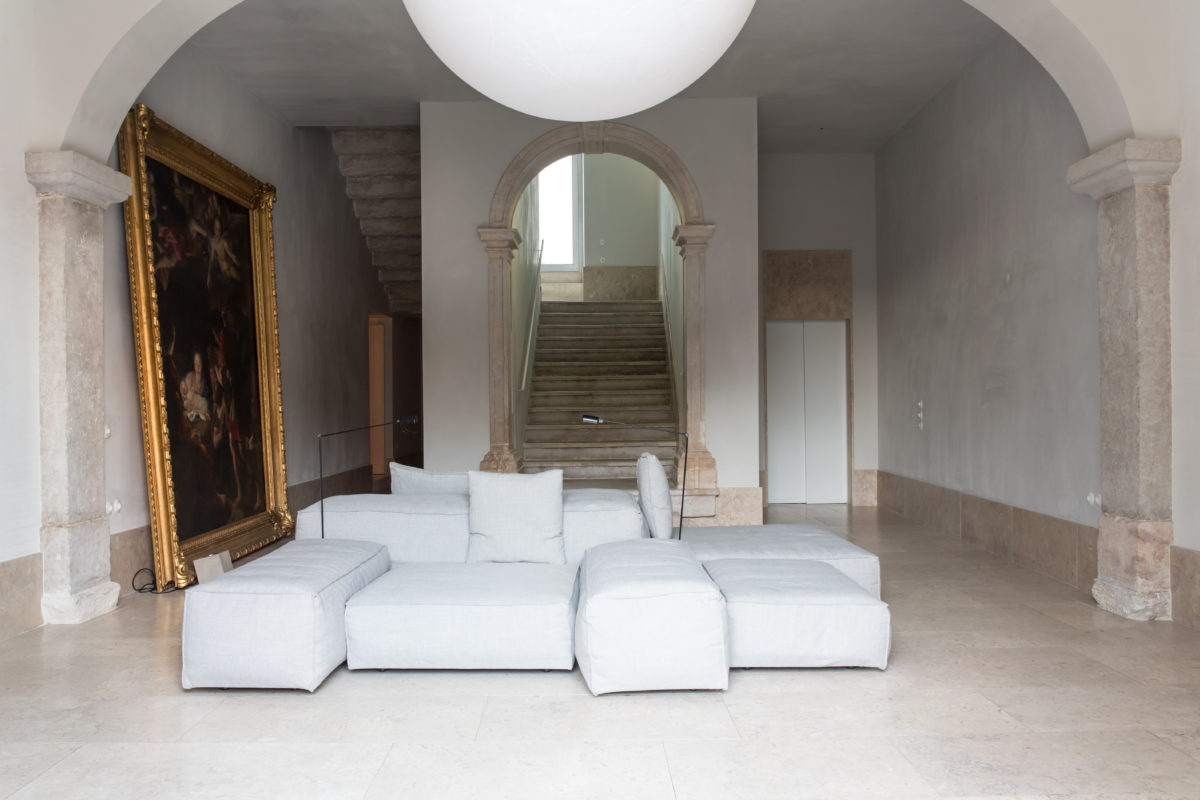On opposite sides of Lisbon, two former residences now play host to visiting guests from around the world. And though they differ in almost every way—one is opulent and oversize; the other, minimal and modern—together, they showcase the contradictory nature of a city in flux.
When you walk into Santa Clara 1728, it smells like cake. I had been told that this would be the case by someone in the know, but the toasted, sweet smell surprised me anyway.
From the outside, the hotel blends in with the rest of a residential block in Alfama, flanked by the Santa Engrácia church and the Feira da Ladra flea market. On the inside, you’re met with not quite a lobby but “the social part of the building,” as owner João Rodrigues describes it. That’s because to Rodrigues, Santa Clara isn’t a hotel, but a home that he’s opened to the public. Which makes sense, considering he never intended to work in hospitality.
As a pilot for the Portuguese airline TAP, his first project actually started as a weekend home for his family in Comporta, with architect Manuel Aires Mateus. After being chosen to represent Portugal at the famous Biennale of Architecture, Casas na Areia was receiving so much press that it only made sense to let others stay there, too. From there, Rodrigues and Mateus built two fishermen’s huts, Cabanas no Rio. Santa Clara is their first project in Lisbon, which they opened in January 2017.

True to form, Rodrigues lives with his family on the top floor. Just like in any home, the activity revolves around the kitchen and dining room, where breakfast and lunch are served each morning and afternoon treats are baked daily for guests to snack on as they return from the day’s activities (hence the permanent cake scent). “Guests are really treated as longtime friends or family,” says Rodrigues. “Food goes in the center of the table, so that families start talking to each other.” Ingredients from the hotel’s garden or the farm at Casa No Tempo, Rodrigues’s fourth project, are used in the kitchen, which frequently hosts visiting chefs.
All of this feeds into the company’s “silent living” concept, which ties together the different properties. It’s a careful, considered take on hospitality, one that’s much more nourishing than, say, a piece of cake. “In hospitality, we are closer to ‘hospital’ than we are to ‘tourism,’” says Rodrigues. “We take care of people.”





